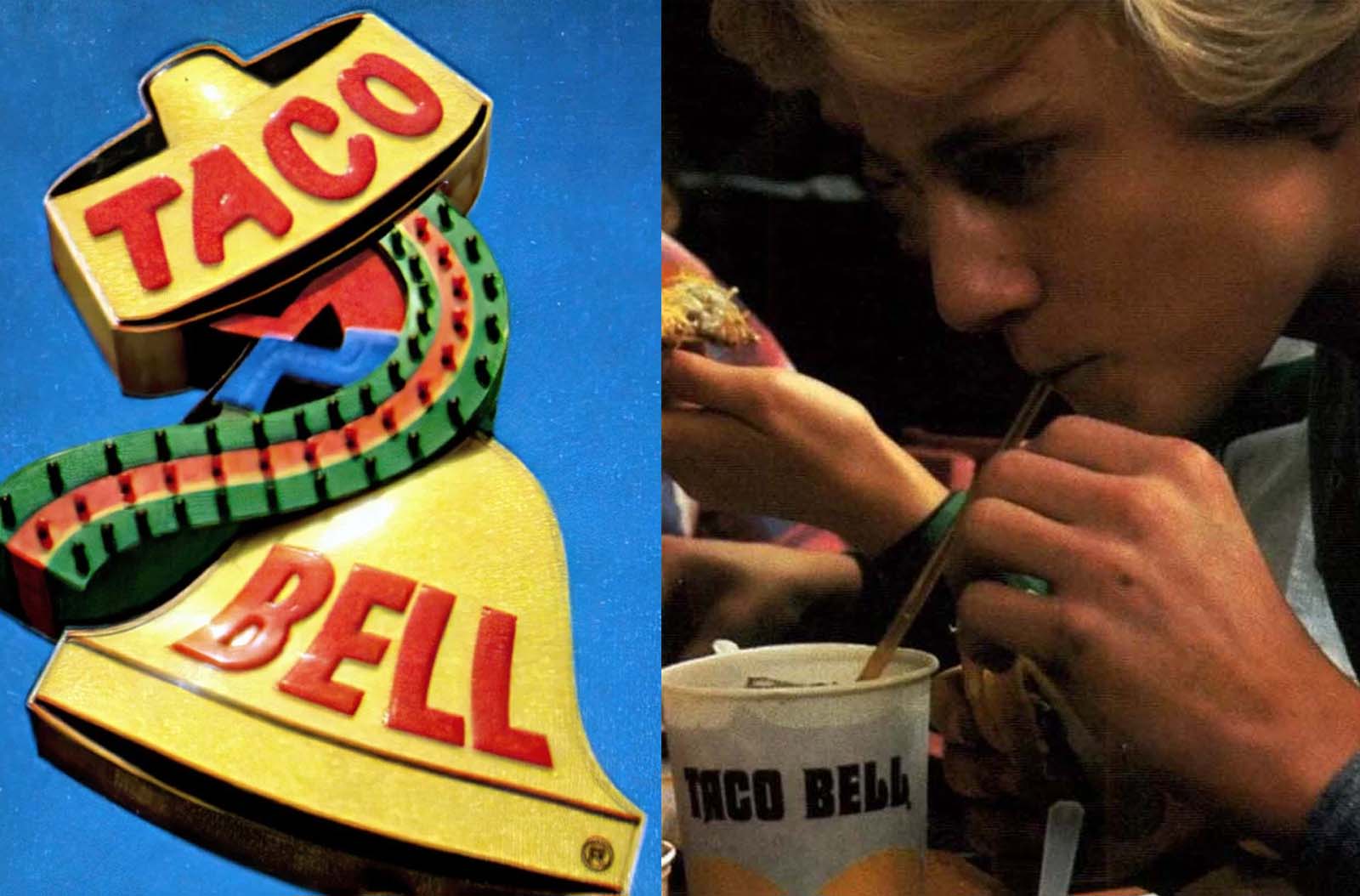
Taco Bell, the Mexican-inspired fast-food chain, has established a reputation for serving affordable and delicious tacos, burritos, and more for over half a century.
However, Taco Bell’s rich history as seen through these vintage menus and advertisements offers a unique perspective on the company’s early branding and advertising endeavors.
Exploring the old menus and advertisements is a journey through time that allows us to reflect on how fast-food dining has evolved.
The vintage menus date back to the 1960s, revealing a limited selection of tacos, burritos, and tostadas that were considerably more straightforward than the vast selection available today.
The advertisements from this era, despite their simplicity, were compelling, featuring catchy slogans and vibrant graphics that encouraged people to stop by for a quick bite.
As the years passed, Taco Bell’s menus and ads evolved with the times. The 1970s brought new items like the Chalupa and the introduction of combo meals, while the 1980s saw the rise of celebrity endorsements and tie-ins with movies like “Back to the Future.”

Taco Bell’s original menu, with its first franchisee, Kermit Becky, 1962. It t offered just five menu items.
Taco Bell was founded by Glen Bell, an entrepreneur who first opened a hot dog stand called Bell’s Drive-In in San Bernardino, California, in 1948.
Bell watched long lines of customers at a Mexican restaurant called the Mitla Cafe, located across the street, which became famous among residents for its hard-shelled tacos.
Bell attempted to reverse-engineer the recipe, and eventually the owners allowed him to see how the tacos were made. He took what he had learned and opened a new stand in 1951.
The name underwent several changes, from Taco-Tia through El Taco, before settling on Taco Bell. Glen Bell opened the first Taco Bell in 1962 at 7112 Firestone Boulevard in Downey, California
The original location was a 400-square-foot (37 m2) building about the size of a two-car garage, and was built with Mission-style arches that covered a small walk-up window that served the original menu items: Tostadas, burritos, frijoles, chiliburgers, and tacos, all for 19 cents ($2 in 2023 dollars).

The very first Taco Bell restaurant.
Taco Bell expanded quickly, gaining its first franchisee, retired Los Angeles policeman Kermit Becky, in 1964 and its 100th restaurant—located at 400 South Brookhurst, Anaheim—in 1967.
Three years later, Bell took the company public; by then it had a total of 325 restaurants located across the West region of the United States.
In the 1980s and ’90s, the company began introducing new menu items and restaurant concepts while also expanding marketing and branding efforts.
Some of the company’s biggest moves during this period included promotions tied to Tim Burton’s movie Batman (1989), the launch of a “value menu” in 1990, the introduction of Taco Bell Express (a small-scale Taco Bell with mostly quick, cheap options) in 1991, and the sponsorship of the first ESPN X Games in 1995.
 Since 2000, Taco Bell has continued to find distinctive ways to brand and partner in order to attract customers. In 2001, for instance, the company promised a free taco to everyone in the United States if Mir, a Soviet space station, hit a target placed by the company in the Pacific Ocean.
Since 2000, Taco Bell has continued to find distinctive ways to brand and partner in order to attract customers. In 2001, for instance, the company promised a free taco to everyone in the United States if Mir, a Soviet space station, hit a target placed by the company in the Pacific Ocean.
In 2004 the company partnered with Mountain Dew soda and released Mountain Dew Baja Blast, which, for some time, could only be purchased at Taco Bell.
A similar promotion began in 2012 in a partnership with Frito Lay; the result, Doritos Locos Tacos, saw considerable success.

By the late 1960s, Taco Bell’s menu had gotten slightly more adventurous.

In 1970, Taco Bell went public with a total of 325 restaurants, and Americans were hooked.

Vintage Ad from 1970s.

Advertisement for Florida’s first Taco Bell, 1967.
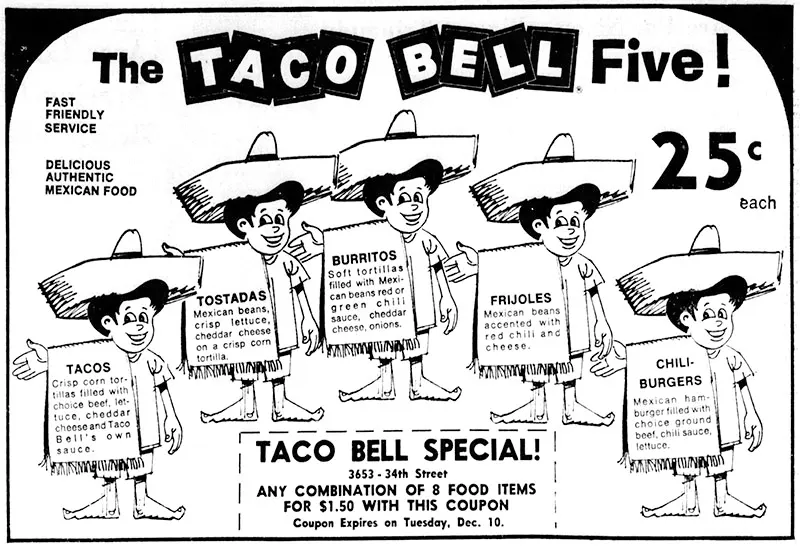
The Taco Bell Five. (The late 1960s).


The chain began selling its famous “enchiritos,” a cross between a burrito and an enchilada, in the late 1960s.

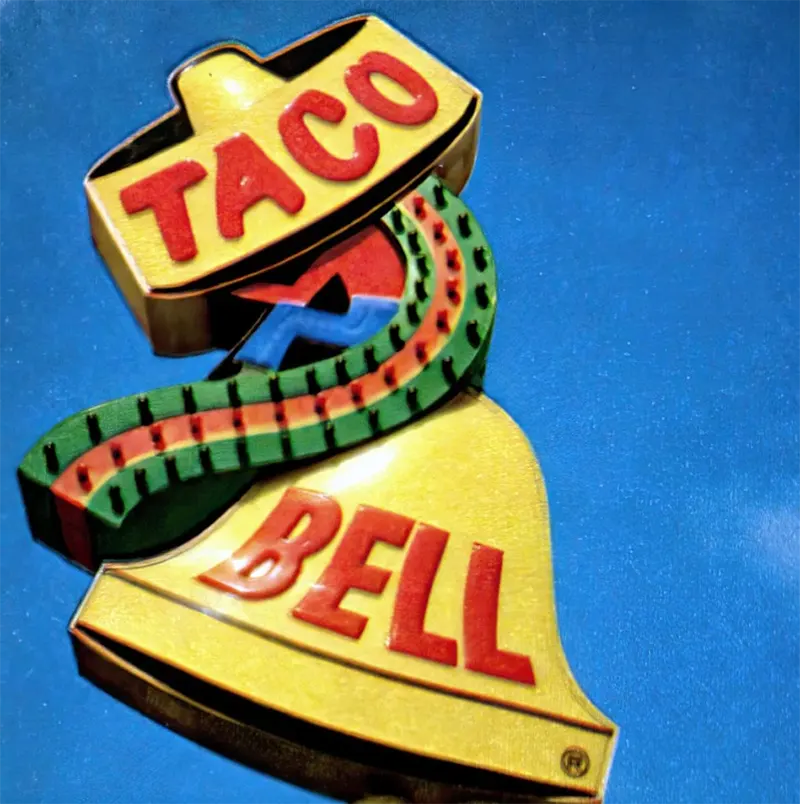
Vintage 1970s Taco Bell sign from 1972.


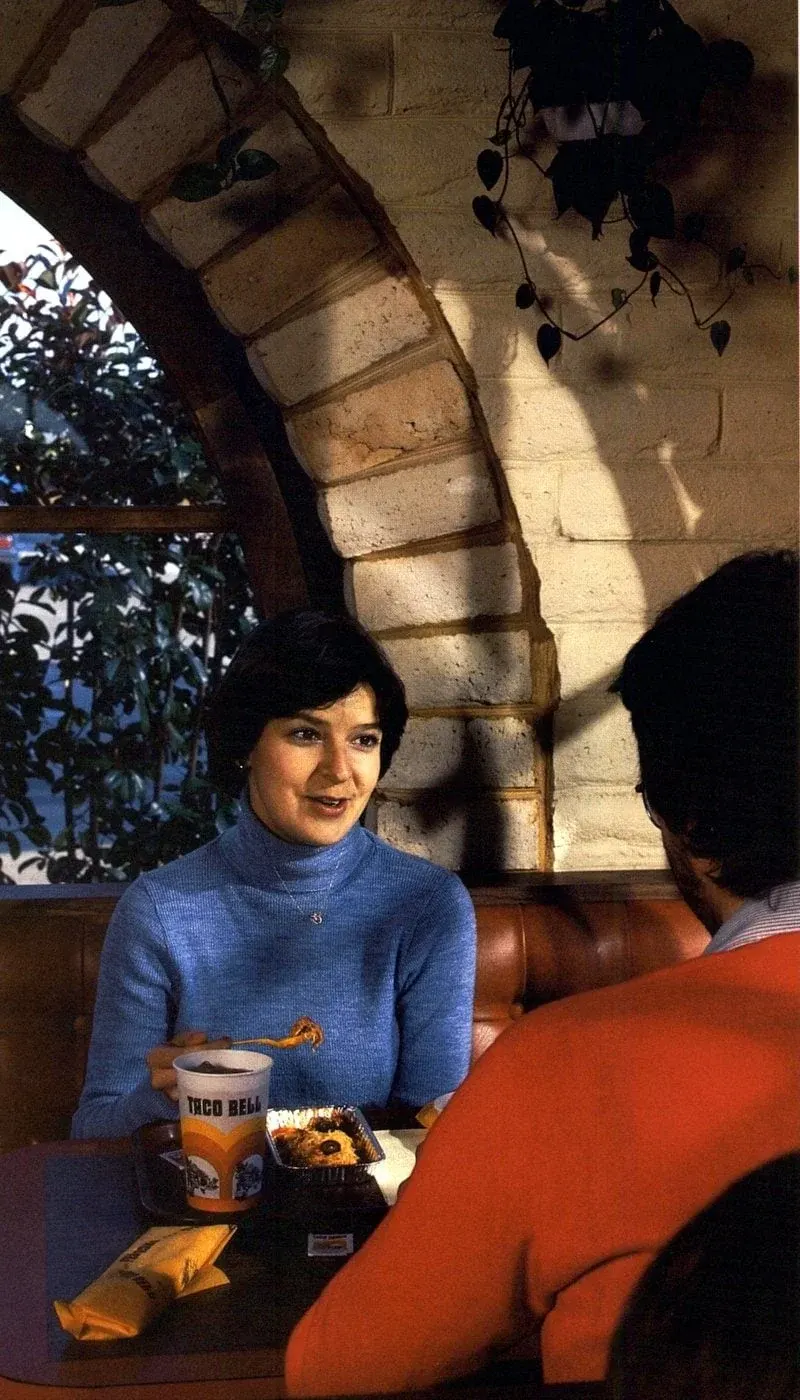
This vintage Taco Bell ad shows the old dining-in experience, 1980s.
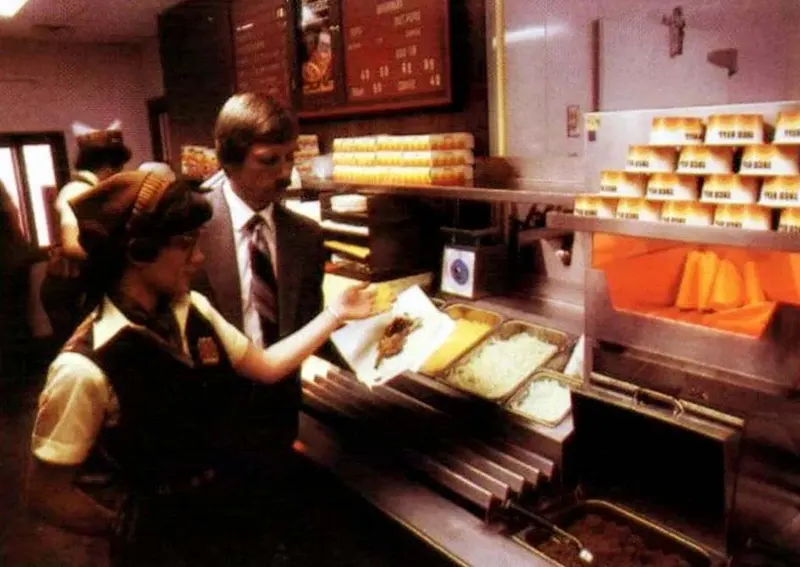
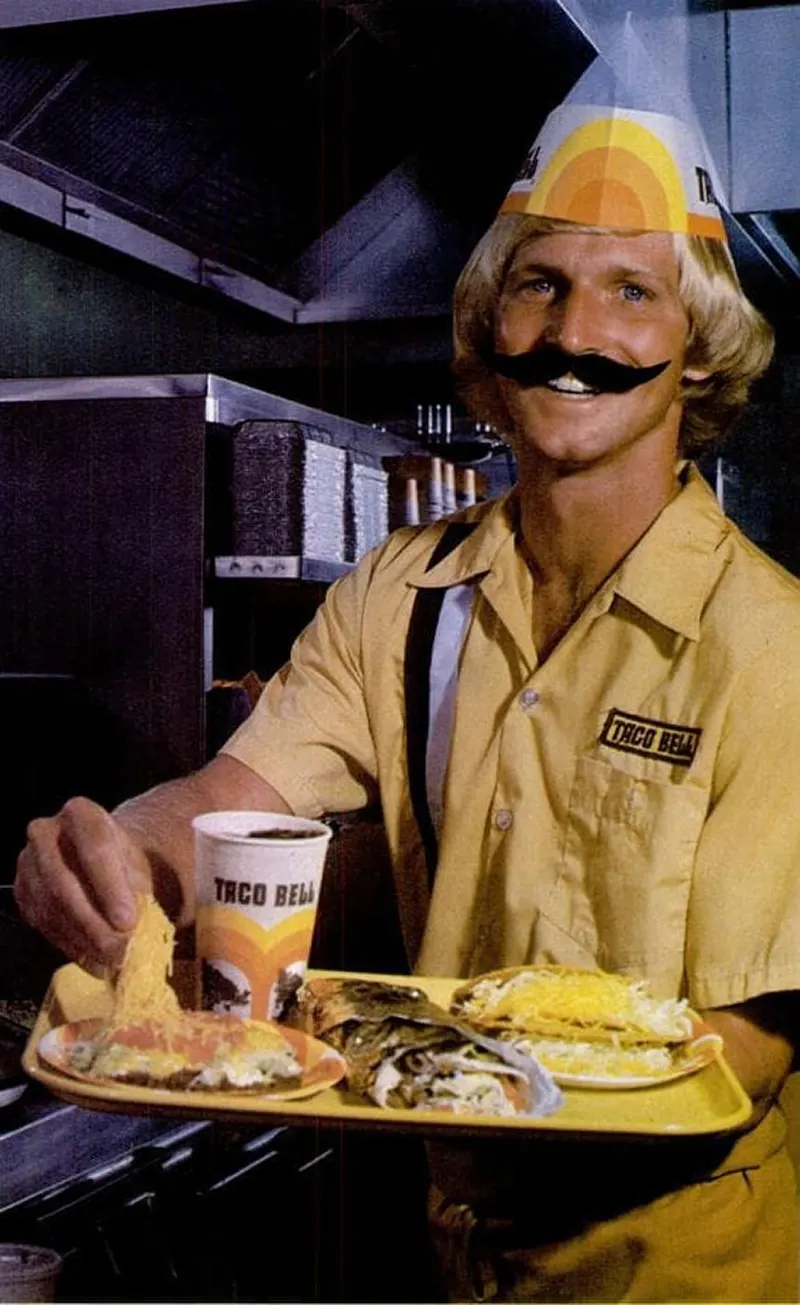
While it’s slightly problematic that Taco Bell employees used to wear fake mustaches and apparently helped themselves to your food before handing it over, we can’t get over this Bell boy’s haircut and cap combo. 1960s.
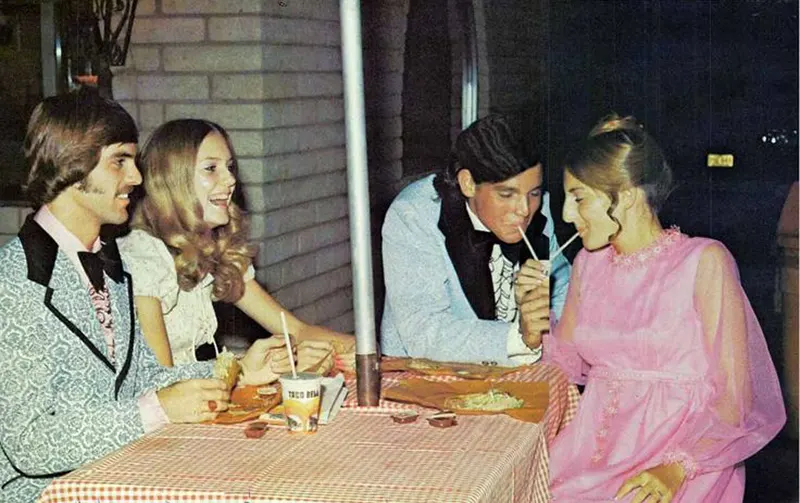
Dating in Taco Bell restaurant.

Food testing and preparation, 1981.
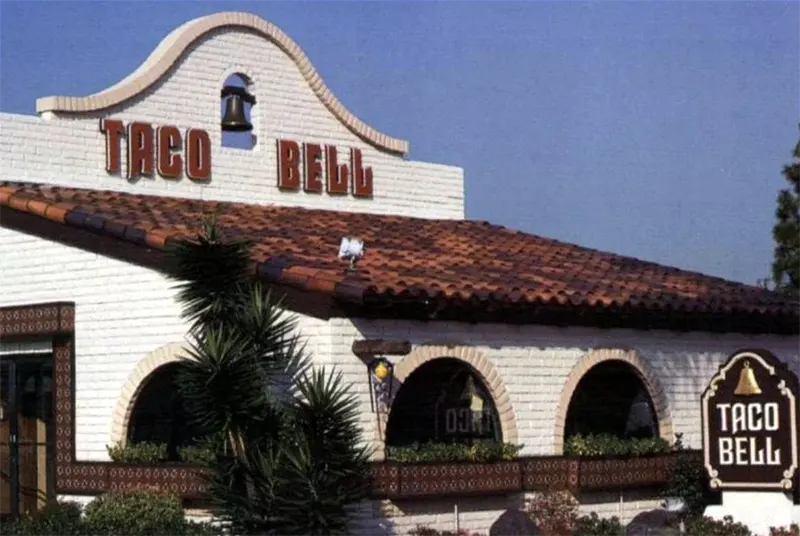
Taco Bell with an old logo from 1983.

Taco Bell, September 1972.

Dine-in Taco Bell, 1990s. (Photo by Phil Donohue)

Dine-in Taco Bell, 1990s. (Photo by Phil Donohue)

1980s Taco Bell sign.
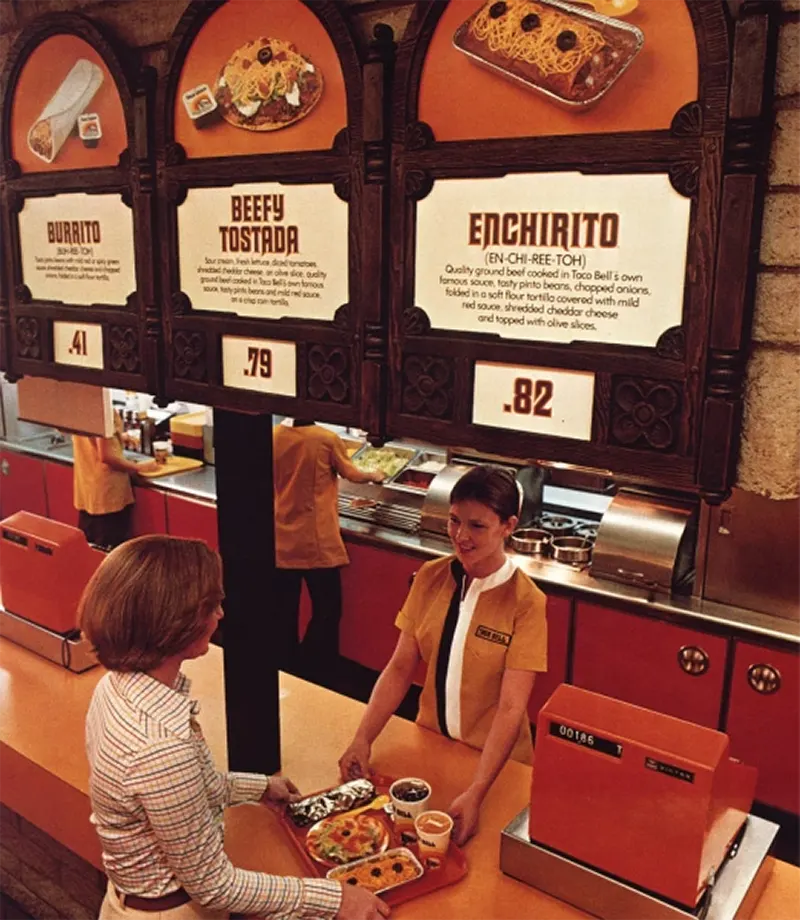
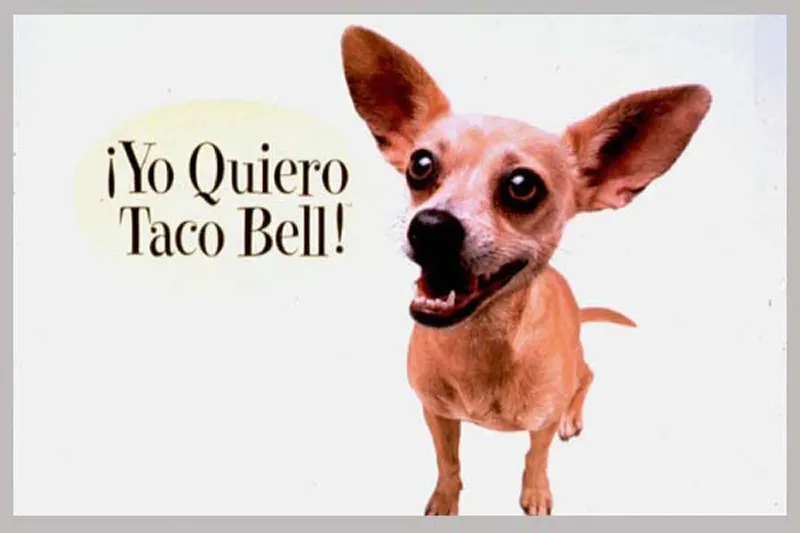
Gidget the Chihuahua is one of Taco Bell’s best known mascots. In 1999, the talking chihuahua ads were the most popular among children, according to the book, “Fast Food Nation.”
(Photo credit: Taco Bell / Pinterest / Flickr / Wikimedia Commons).
Related